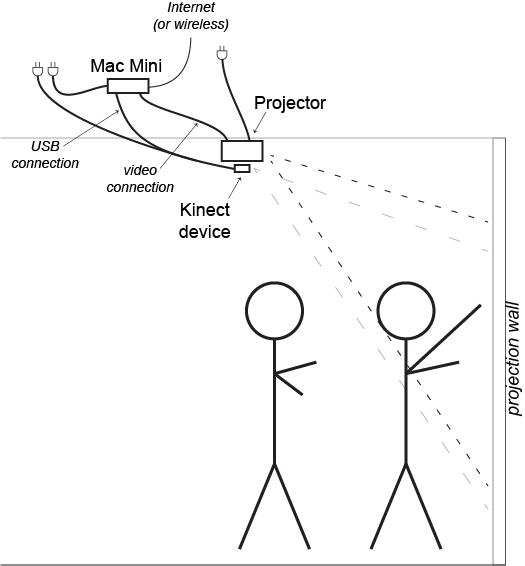The Molecular Playground - How it Works
The interactive Molecular Playground leverages two technologies to provide beautiful molecular images that can be controlled by the simple wave of a hand. To display molecules, the playground employs an open source software package called Jmol. In this rich environment, authors can animate molecules, with programmed rotation, zooming, and highlighting of specific parts of the molecule - a 'movie' that illustrates key aspects of the molecule. In addition, software developed by Adam Williams and Allen Hanson 'watches' the space in front of the playground, looking for motions that it detects as a user's hand. Interpreting these motions, the software then sends commands to Jmol. At that point, the pre-programmed animation is paused and the user takes control of the molecule, rotating the molecule at will. When the user walks away (or steps back), control is returned to the pre-programmed animation.
In the most recent incarnation of the playground, a Microsoft Kinect device is used to monitor the playground. This device projects a patterned IR image on top of the molecule, but of course the IR pattern is invisible to humans. When the IR pattern falls on a person in front of the image, the pattern is altered by the closer distance. In this way, the Kinect device can report back to the software only movements that are taking place in front of the image and be blind to the image itself. In other words, perturbations to this abstract IR pattern are interpreted as user movement.
